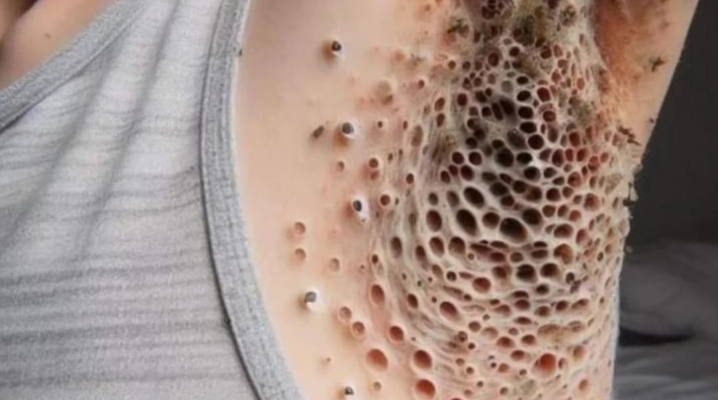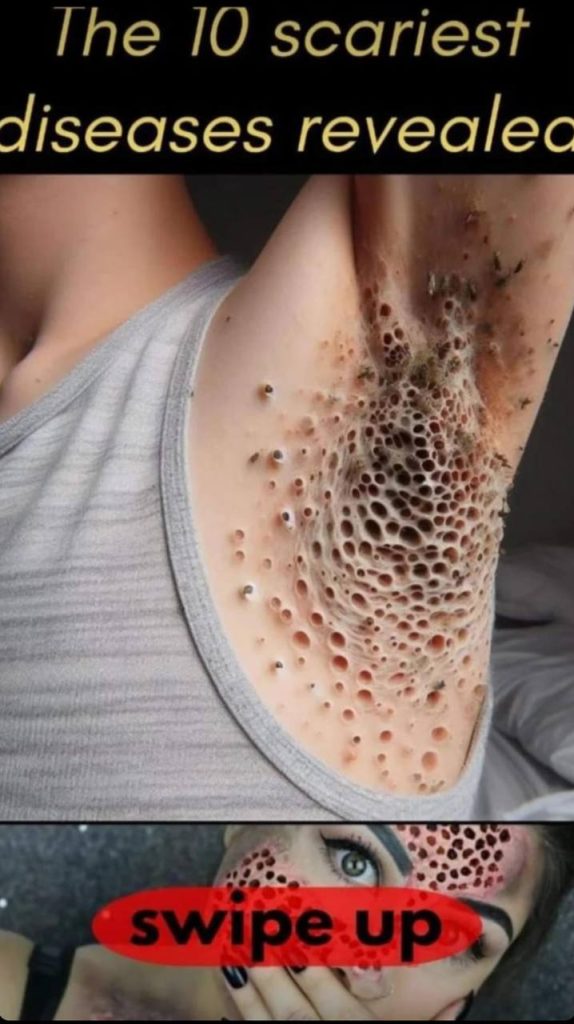Trypophobia is an aversion or fear of clustered holes or patterns. Despite not being officially recognized as a phobia in the Diagnostic and Statistical Manual of Mental Disorders (DSM-5), many people report feeling discomfort, anxiety, or even nausea when they see specific shapes or patterns. The term “trypophobia” comes from the Greek word “trypa,” meaning “hole,” and “phobia,” meaning “fear.”
Symptoms of Trypophobia
People with trypophobia experience a range of reactions that vary in intensity, including:
Nausea: Some individuals feel sick or uneasy when looking at certain clustered patterns.
Goosebumps or Shivers: Seeing these patterns can cause physical reactions such as goosebumps or tingling sensations.
Intense Discomfort: Many feel a strong desire to look away or avoid objects with the shapes that trigger discomfort.
Sweating or Rapid Heartbeat: These physical symptoms are often related to anxiety or fear when exposed to trypophobic shapes.
Possible Causes of Trypophobia
While the exact cause of trypophobia is still under research, a few hypotheses have been suggested:
Evolutionary Response: Some psychologists suggest it may be an evolutionary survival response to avoid disease or danger. Certain poisonous animals or infected skin patterns have clusters of holes or bumps that resemble trypophobic shapes.
Visual Stress Theory: Research indicates that certain patterns and contrasts may cause visual stress, leading to discomfort.
Conditioned Response: For some, it may be a learned or conditioned response from childhood or a traumatic experience involving similar patterns.
Common Shapes and Patterns that Trigger Trypophobia
People with trypophobia typically experience discomfort when they see certain clustered shapes or patterns. Here are some of the most common ones:
1. Clusters of Small Holes
Natural objects, such as honeycombs or coral reefs, with clusters of small holes are a significant trigger.
Artificial textures, like sponges or aerated chocolate, can also create similar reactions.

2. Circular Patterns or Bumps
Lotus Seed Pods: The seed pods of the lotus plant are often reported to be a strong trigger for individuals with trypophobia.
Infected Skin Patterns: Images or even imaginary patterns of bumps on human or animal skin can cause extreme discomfort.

3. Irregularly Shaped Patterns
Bubbles or Foam: Irregular bubbles formed in soap or foam, which have circular or oval shapes that cluster together, often trigger the phobia.
Coral and Sponge Texture: The porous textures of corals or sponges in marine environments can elicit strong reactions.

4. Repetitive Geometric Patterns
Patterns that contain multiple shapes in a repeated fashion, especially if they are asymmetrical or tightly grouped, may also be disturbing. Honeycomb tiles or certain architectural designs can provoke this response.
How Trypophobia Affects Daily Life
For some individuals, trypophobia can impact daily life, making it difficult to encounter even common items like sponges or seeds. Those with a more intense reaction may find themselves avoiding certain locations, foods, or experiences. Additionally, unexpected triggers in media or the environment can cause sudden anxiety or discomfort.
Coping and Management Techniques for Trypophobia
Although trypophobia is not always formally treated as a phobia, there are ways to manage symptoms:
Cognitive-Behavioral Therapy (CBT): This therapeutic approach can help individuals reframe their thoughts and reduce discomfort related to trypophobic patterns.
Gradual Exposure: Exposure therapy may help some individuals desensitize to triggers by gradually exposing themselves to the shapes in a controlled way.
Mindfulness and Relaxation Techniques: Techniques like deep breathing, meditation, and grounding exercises can reduce the anxiety or discomfort associated with trypophobia.
Final Thoughts on Trypophobia
Trypophobia may not be widely recognized, but it affects a significant number of people worldwide. For those who experience discomfort from trypophobic shapes, it can be challenging to avoid triggers, given that the patterns often occur in nature or everyday items. However, with awareness and, if necessary, therapeutic support, individuals with trypophobia can find ways to manage their responses effectively.




